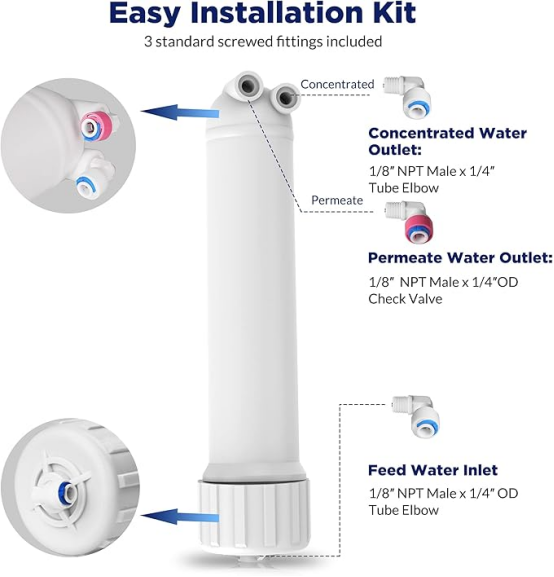Introduction to Reverse Osmosis
Reverse osmosis (RO) is a widely used water purification technology that harnesses the power of a semi-permeable membrane to separate impurities from water. This process is essential for providing safe drinking water, desalinating seawater, and supporting various industrial applications.

How Reverse Osmosis Works
At the heart of reverse osmosis is the RO membrane, a thin layer of material with microscopic pores. When contaminated water is subjected to high pressure, it is forced through this membrane. Water molecules pass through the tiny pores, while larger molecules, salts, and contaminants are retained on one side, resulting in purified water on the other.
Applications of Reverse Osmosis Membranes
1. Drinking Water Purification: RO systems are commonly found in homes, where they effectively remove pollutants such as chlorine, heavy metals, and bacteria, ensuring safe drinking water.
2. Seawater Desalination: In regions with limited freshwater resources, RO technology is crucial for converting seawater into potable water. This process provides a sustainable solution to water scarcity.
3. Industrial Water Treatment: Many industries, including food and beverage production, pharmaceuticals, and electronics manufacturing, utilize RO membranes to achieve high-purity water essential for their processes.
Benefits of Reverse Osmosis Membranes
· High Efficiency: RO membranes can eliminate up to 99% of dissolved solids and contaminants, making them highly effective for water purification.
· Versatility: They can be used in various settings, from residential systems to large-scale desalination plants.
· Health and Safety: By providing clean, contaminant-free water, RO technology helps protect public health and enhances the quality of life.
Challenges and Considerations
Despite their benefits, reverse osmosis systems have some challenges. The process can be energy-intensive, and the membranes require periodic replacement—typically every 2 to 3 years. Additionally, the disposal of concentrated wastewater needs careful management to minimize environmental impact.
Conclusion
Reverse osmosis membranes play a vital role in ensuring access to clean water worldwide. By understanding their function and applications, we can appreciate their significance in modern water treatment and the ongoing efforts to improve efficiency and sustainability. As technology advances, reverse osmosis continues to be an ultimate solution for addressing global water challenges. If you have more questions or specific topics to explore, feel free to ask!




评论 (0)